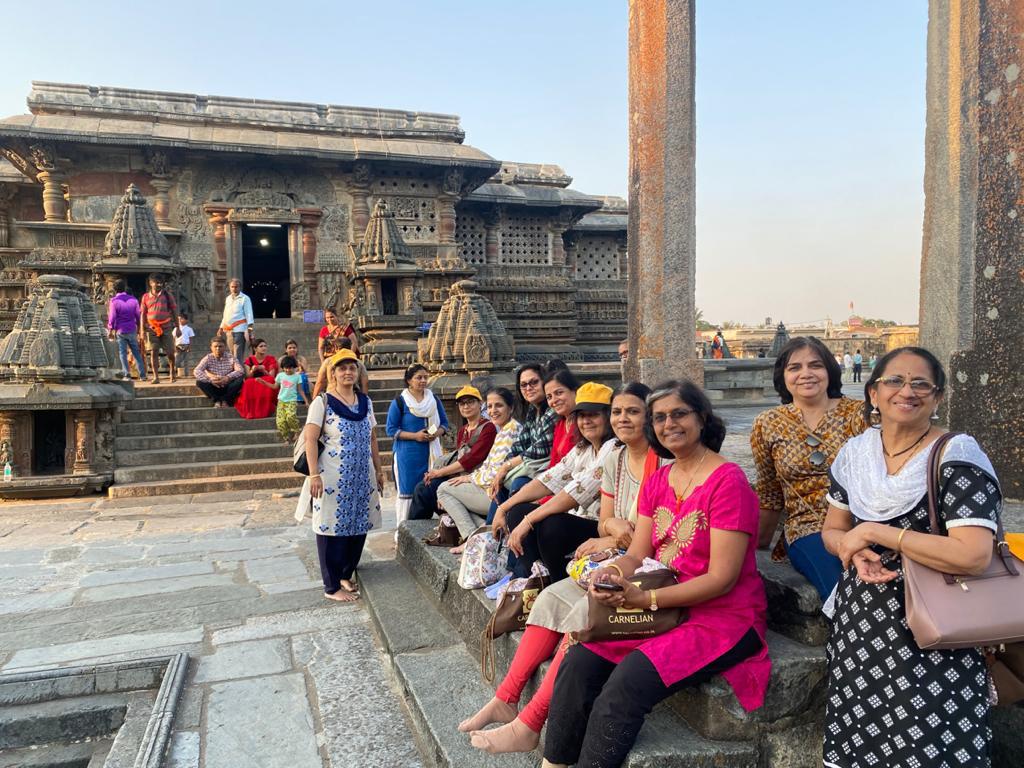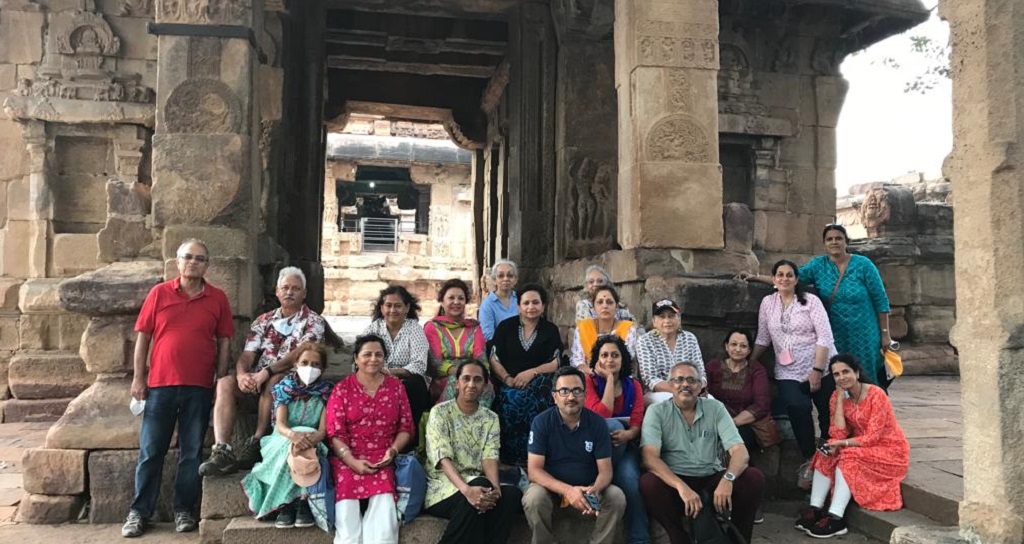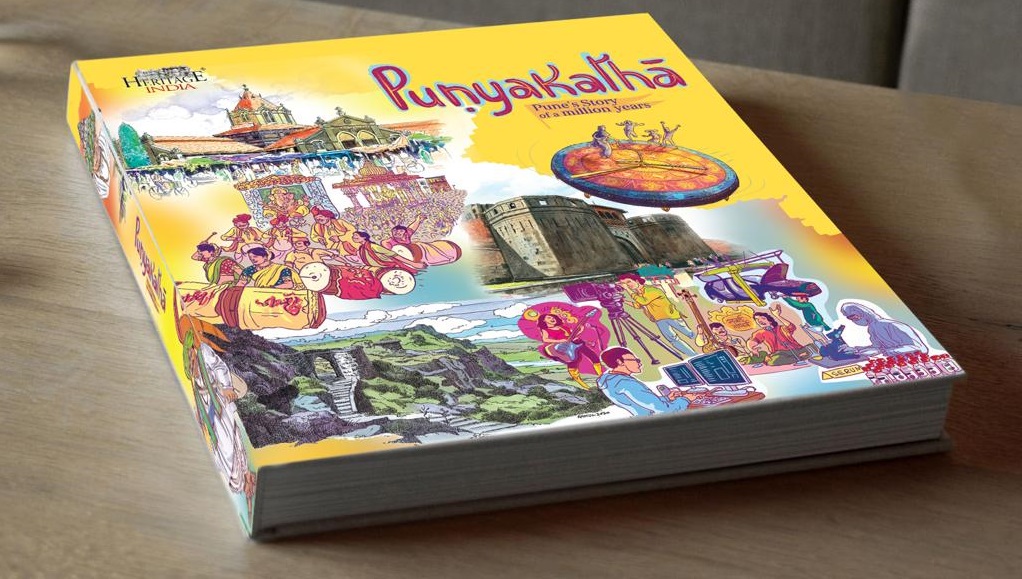
‘Heritage is where your identity lies’
Heritage India’s founder Manjiri Khandekar tells us why it’s important to make people aware about India’s rich, vast heritage and how the COVID-19 pandemic sprang a pleasant surprise on them.

Heritage India’s founder Manjiri Khandekar tells us why it’s important to make people aware about India’s rich, vast heritage and how the COVID-19 pandemic sprang a pleasant surprise on them.
Village Square: Heritage India focuses on taking history outside the classroom. What does that involve?
Manjiri Khandekar: In a classroom setting, learning about a conflict or a dynasty or a war may seem boring and not as exciting. Even if you have a great history teacher in the class, it cannot be as impactful as seeing and experiencing a place yourself. We are fortunate that in India we can experience heritage without much hassle because she is alive all around us.
You cannot take India out of a person if you’ve grown up here. Heritage has everything to do with our identity — that is where our identity lies. That is who you are and you have to know who you are. You have to know your roots. Only then can you be proud of who you are.
Once you have a sense of belonging you could be living anywhere in the world, and it doesn’t matter. You need roots to hold you down firmly in the ground and then you can branch out towards the sky as high as you want.
Village Square: How is a heritage tour different from any other kind of travel?
Manjiri Khandekar: First of all, a heritage tour takes into consideration a lot of aspects about the place that we normally don’t cover. We try to involve all the five senses — sight, smell, taste, touch and hearing. And of course, we always travel with an expert, a scholar who has studied that place extensively.
I have been to Ellora caves a couple of times earlier with friends and family. We covered everything in half a day — that was it. But later we did a heritage tour with Dr GB Deglurkar, a national-level expert on temple architecture. The Kailasa temple of Ellora — a sacred site for Hindus — is on UNESCO’s World Heritage list.
Also Read | Tribal heritage and fashion at Hijla fair
We visited this place with Dr Deglurkar, and he explained each statue to us in detail. What is that structure saying to you? What is the philosophy behind it? What is the meaning behind the structures?
We actually started believing at a certain point that we had gone back in that era and were no longer just looking at a sculpture, but that we were a part of that era with all those people sitting there. The experience was authentic.
Village Square: How did Heritage India’s journey begin?
Manjiri Khandekar: Heritage India is a journey of passion. It’s not a typical business enterprise. It was a dream that I nurtured for a long time before I translated it into reality.

I graduated from Saint Xavier’s College in ancient Indian culture and history. At that time, I used to wonder why despite having a heritage and history of over 7,000 years, India does not have any heritage-related periodical that speaks to our people. I first dreamt about bringing out a periodical which would give us some insight into that.
The history that we learned in school was very sketchy and focused on your own state or region. For example, people in Maharashtra know about Shivaji, but not necessarily as much about the Chola dynasty which is taught in Tamil Nadu.
So that was the genesis, the seed of Heritage India. The first step is to create awareness about our heritage and that is the mission with which Heritage India started in 2007.
Also Read | Community efforts save Goan heritage lake
Village Square: What does the word heritage mean to you?
Manjiri Khandekar: We set up Heritage India with the aim of bringing out a quarterly magazine on the subject. What we meant by heritage is everything that has come down to us from our ancestors.
When you talk about heritage, people only understand buildings, monuments and sites. But that’s not it. There are dynasties which created these monuments. Why did they create them? What were the uses and how have they come down through the generations? What are the related stories about these structures?
The monuments are indeed gorgeous. But there are stories of real human beings and their grandeur and tragedy associated with them. It’s important to know all these stories.
So culture is heritage because it is something that has come down to us. But in the same way nature too is part of that. Natural environment has been passed down to us through the ages. For example, Ayurveda has its roots in the natural heritage of our country. Our environment has to be classified as heritage.
India is one of the few remaining countries where our arts and crafts are still done by hand. While most of the world has gone to the machine and mass production, we still have people across the country working with their hands to produce beautiful work with materials like metal, wood, cloth and leather.
Also Read | Bengal youth lead revival of heritage rice varieties

The saddest part is that we are not as aware about all this. Unless you are aware of what you have, how will you feel proud about it? That is why awareness precedes preservation and conservation.
Village Square: How did the COVID-19 pandemic impact you?
Manjiri Khandekar: We were in conversation with Bhandarkar Oriental Research Institute (BORI), Pune, a pioneering institute for research and Indology, about outreach and spreading awareness.
We have been working to make knowledge vested in scholars more accessible to the common people. We were going to start classroom sessions with BORI because they have a lot of knowledge of the Vedas and the Upanishads.
They’ve worked for years to bring out an edition of the Mahabharata. So all this knowledge needs to be taken to the public. We had designed the course and planned everything before the lockdown happened in March 2020.
That’s when the digital platforms gained widespread popularity. So we convinced them to give the online medium a shot. We worked out the economics and it was decided that if we had 40 people enrolling for the first course we would break even.
Also Read | Ladakh mother carves Tibetan legacy on stone
We started our first course by April and guess what happened? As many as 600 people from across the globe enrolled for it. That was mind blowing. It was like people were just waiting for something like this.
The lead image shows a heritage tour in Belur, Karnataka (Photo by Heritage India).